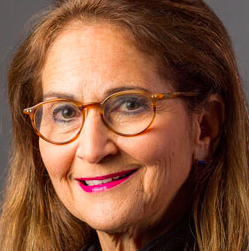What, you’re not subscribed to our Monday newsletter? Head over to the righthand side of the page and sign up. Here’s some of what subscribers got in their in boxes this morning:
GOOD MORNING FROM SOMEWHERE IN ALASKA … Welcome to the summer haircut edition of Must Read Alaska, where we have not yet been to see the highly anticipated Tupac Shakur biopic “All Eyez On Me” … We’ll wait for the book … China has blocked internet searches for “Kim Fatty the Third”, a popular term that is used in China for North Korean leader Kim Jong-un … The Supreme Court has said the U.S. Patent and Trademark Office acted unconstitutionally when it denied a rock band named “The Slants” a trademark for their name, which the government found offensive … But first…
FORWARD THIS TO A FRIEND: Each week we bring you conservative content and curation you won’t find elsewhere. Our subscribers include 10,000 Alaskans and growing. We can’t do it without you. Thanks to those who support this work to bring conservative perspectives to Alaska current events.

WILD GOOSE 1: Those of us who grew up in Juneau in a certain era remember the motor vessel Wild Goose, John Wayne’s 136-foot yacht that would slip into Auke Bay unannounced during the summer. The yacht was a converted World War II mine-sweeper and was sister ship to Jacques Cousteau’s Calypso.
We kids wondered … maybe John Wayne was aboard, but it was equally possible, (and knowable to a select few) that Frank Sinatra had chartered the boat. Float planes would come and go and pull up to the yacht, which swung at anchor with the tides, and unload some movie legend or another.
Vanity Fair this month publishes some rare old photos of The Duke and the boat he spent the better part of 17 years on.
WILD GOOSE 2: It may not be John Wayne’s yacht, but one “wild goose chase” idea to ponder: By mere coincidence you could talk to a State employee by the name of “John Wynne” about buying the M/V Taku, another historic vessel from Southeast Alaska’s yesteryear.

The State of Alaska couldn’t attract a buyer for the $1.5 million asking price, so you can now steal it for $700,000. Or less. Make an offer.
For 50 years, the Taku plied the waters of Southeast Alaska, but the 352-foot ferry is too expensive to keep up and has been idle for two years.
Built in 1963, the ship ran aground in 1970, poking into a small island in British Columbia. With its bow stuck in the trees, and passengers waiting for a ride from a BC ferry, the bartender served up a special drink called “Taku on the Rocks.”
The deadline for receiving bids was May 31. No word from DOT as to whether someone has ponied up the cash for a piece of Alaska maritime history.
STANDBY FOR FIGHTER SCRAMBLES: Over the weekend, Russia amped up tensions with the U.S. by promising to shoot down U.S. aircraft over Syria. With both air forces on high alert, look for Russia to flex its muscle in the Arctic as well. That Trump-Russia collusion thing is looking increasingly laughable.
GASLINE OPEN SEASON STARTS: AGDC’s open season to reserve capacity in the Alaska LNG pipeline project started Thursday and runs through August. It’s the courting phase for a summer romance with a Walker Go-It-Alone (WA-GIA) project that few Alaskans think is viable. More here.
Lest we forget, the gasline project also had a 90-day open season in 2010 … and another in 2012 … The line forms on the left.
GASLINES ARE FOR GIRLS? In April, Gov. Bill Walker made a pitch to China’s President Xi, “sovereign-to-sovereign,” to try to get him interested in investing in the Alaska LNG project. With all other partners having pulled out, Walker is now looking to despotic governments to invest.
Now this week, First Lady Donna Walker and her three daughters are being wined and dined in China at the expense of the Chinese government. Charm offensive.
CHINA ISN’T FOR SISSIES: China’s billionaires have an odd way of turning up “disappeared” or dead. The L.A. Times has a list of the missing.
TOO MUCH GAS: The boom in liquefied natural gas facilities along the U.S. Gulf Coast is outpacing the market, says the Houston Chronicle. Energy companies are building or have proposed so many export terminals that they can’t all be successful, according to energy research firm Wood Mackenzie. If all were built, LNG capacity could quadruple current production. “The numbers proposed far exceed what the world realistically needs,” said Alex Munton, Wood Mackenzie’s principal analyst of LNG in the Americas. (h/t Larry Persily.)
IF IT PLEASES THE COURT: Oral arguments in the case of Bill Wielechowski, Clem Tillion, and Rick Halford against the Walker Administration are scheduled for 1:30 pm on Tuesday, June 20 at the Boney Courthouse on K Street.
The three are suing the governor for vetoing half of Permanent Fund dividend appropriation last year. He hasn’t spent it but has left it in reserve to be part of a fiscal solution — one that is having trouble getting through the Legislature. His move infuriated some Alaskans but many others shrugged.
Walker is used to being on the other side of the lawsuit, having made his career suing the State of Alaska and various oil producer over various grievances. Now he has an entire Dept. of Law to defend against two Republicans and a Democrat, not to mention the court of public opinion. Weird times.
Protests will start at noon in front of the courthouse, we’re told. It’s case number S16558. Read our “This is awkward” explainer about it.
If the three challengers lose in court, Clem Tillion says that he’s already raising money for a voter referendum.

CRAY-TOWN BUDGET: The House Majority, with Democrats in charge, passed the most reckless budget they could come up with last week, drained over one-third of the Permanent Fund Earnings Reserve Account to fund a bloated, $12.1 billion budget, the second-largest budget in Alaska history. And they did so with a straight face.
Gov. Bill Walker had to call another special session because the Democrats-in-charge budget had created an automatic government shutdown by not passing an “effective date.” They then held a press conference where they were caught lying about their budget. Even the reporters in the room seemed a bit skeptical.
Here’s how it went down:
Democrats pass budget that would shut down government
THANKS FOR THE MEMORIES: We recall the letter last May that Reps. Gabrielle LeDoux, Louise Stutes, Paul Seaton, Bryce Edgmon, Jim Colver, and Neal Foster sent to then-Speaker Mike Chenault, in which they stated they could not use the Earnings Reserve Fund to fund government:
“We feel that resorting to Permanent Fund earnings so suddenly as part of a solution to the impasse will sow grave confusion and mistrust among Alaskans,” the letter said. “Furthermore, we strongly believe that major actions having to do with the Permanent Fund, such as this, should go before the voters.”
That was so last year.
BEGICH SIGHTING: Just before all the chaos broke loose from the House Democrats, Mark Begich was spotted in Juneau. Mere coincidence?
HOMER: The council members who faced recall last Tuesday retained their seats by a comfortable margin of over 56 percent of the voters. The turnout was record-setting 42 percent. Lessons learned? It is hard to unseat a lawmaker — local, radical, or otherwise — in a special recall election.
The recall group, Heartbeat of Homer, kept it clean, stuck to the high road, and allowed the facts to speak for themselves. They discovered a lot about their community and about the election process. As one said, “We’re just getting started.”
JUNEAU MINING: City Manager Rorie Watt wrote that it’s wrong to open up the 1989 mining ordinance for review and in a memo advised the Juneau City and Borough Assembly against it, saying:
“The city should provide a large amount of education for members of the public so they can further understand the intricacies of possibly reopening the AJ Mine.”
“To be perfectly frank, a change now to our existing mining ordinance may not be durable. Several (if not many) Assemblies would have an opportunity to make subsequent changes.”
The Assembly didn’t buy it and voted 6-3 to take a look at the mining ordinance. Read Win Gruening’s discussion of the controversy that has just begun.
DRAINING THE SWAMP IS NOT THAT SIMPLE: Interior Secretary Ryan Zinke is reassigning dozens of top career officials, reports the Washington Post. The shakeup could involve as many as 50 bureaucrats.
However, getting rid of bad actors in the permanent bureaucracy is not that easy. The Senior Executive Service is a “swamp classification” created in 1978 when President Jimmy Carter signed the Civil Service Reform Act. You can’t fire these guys, even when they steer contracts to their buddies.
WHO WILL HEAD BIA? We are hearing Jerry Ward of Alaska has a shot at the job of running the Bureau of Indian Affairs, but word is he would rather stay home in Alaska. Will he be tempted?
LEFTIST VIGILANTES: Here is a flyer showing up on bulletin boards in downtown Juneau, which indicates some Democrats are indeed unhinged.

VIOLENCE BY THE LEFT ON THE RISE: The Alt-Left is committing more acts of terror, say experts.
MRAK BLOG DITCHES GOOGLE ADSENSE: Readers of Must Read Alaska, the daily news and commentary site, kept seeing ads pop up for Democrat candidates, such as Georgia Democrat Jon Ossoff, who is battling Republican Karen Handel in Georgia’s Sixth District’s special election Tuesday.
This unwelcome surprise happened before with Tom Begich ads, and it’s annoying to readers, especially those on mobile devices.
We are disabling the Google service that pushes random ad content onto the blog. We’re hoping donors will make up the difference. This summer we’ll sell some more ads and keep on keeping on.
Help us keep the other side in check … Send a check:
Must Read Alaska
3201 C Street Suite 308
Anchorage, AK 99503
Our PayPal portal is at:
www.mustreadalaska.com
THANK YOUS ARE IN ORDER: Must Read Alaska strikes a balance for conservatives like you in Alaska. Thank you to everyone who has donated to the cause this week:
- S.H. – Anchorage solid supporter
- R.A. – Homer patriot
- R.G. – Anchorage – thanks again!
- And everyone else who has sent support previously – thank you, kind people!
- If you’re fishing, take a break and donate!























